#physical paradox
Explore tagged Tumblr posts
Text
Shichigosan (a Physical Paradox extra)
I wanted to write something for shichigosan (aka seven-five-three, celebrated on or around November 15) since Eiji would be 5 this year and the twins would be 3!! I hope you guys like it and would love to know what you think!!
Just something a lil short and sweet for our Physical Paradox Goinko and fam!!
Kiko's Masterlist | Buy me a coffee ☕️ | AO3

2024
Rinko’s heart melted at the sight of Eiji when he stepped into the room, fully dressed and ready for the festival.
“Don’t you look handsome?” she cooed, unable to keep the grin from her face when he puffed his chest out proudly.
As if she needed more reasons to adore her son. The hakama paired with the patterned haori fit him perfectly. It made him look like a little man instead of her little boy. She couldn’t believe they were already celebrating his shichigosan. Her sweet boy was growing up way too fast.
All of their kids were.
She half-expected Maki or Mai to inform her that they were engaged any day now. She just hoped that they didn’t tell her at the same time.
“You look really pretty, momma,” Eiji stated matter-of-factly, stepping closer and tugging on her kimono. “So do you, Yumi.”
Yumika giggled, reaching for him once Rinko had secured the hifu around her.
“Nii-chan look hantom,” she replied, her hands clutching his haori.
“He does,” Rinko agreed, chuckling as she straightened, adjusting her obi as she did so. “Where’re your daddy and Shirou?”
“Shirou didn’t like his hakama,” Eiji muttered, fiddling with the green cords fastening his haori. “He said it felt funny, so Daddy’s talking to him about it.”
It didn’t surprise her. Shirou didn’t like being uncomfortable, and traditional clothes were practically the definition of uncomfortable.
Nodding, she released a quiet sigh before motioning for them to move.
“Go downstairs with Yumi, then,” she said, smoothing her kimono. “I’ll go check on the others.”
Eiji nodded dutifully, grasping Yumika’s hand tightly and guiding her out of the room.
“Can we watch cartoons while we wait?” he asked, and Rinko smiled.
“Yes, sweetheart.”
She heard him asking Yumika what she wanted to watch as they descended the stairs, and she pursed her lips as she approached the twins’ room, hearing Satoru’s quiet voice, the frustration just beginning to bleed into his tone.
“–don’t have to wear it if you don’t want to–”
“I wanna match!”
“Then you gotta put ‘em on, buddy,” Satoru replied, sighing. “I know they’re uncomfortable, but–”
“Itchy!” Shirou exclaimed, and Satoru released a heavier sigh than before. “Don’ wanna!”
“Then how about you and I match, yeah?” Satoru reasoned. “What if you and me wear–”
“Wanna match Nii-chan!”
Satoru stayed silent, and Rinko furrowed her brow as she assumed he tried not to let the exclamation hurt his feelings. But it probably did, anyway.
“Darling,” she called gently, stepping inside and trying to suppress her chuckles at the sight she was met with.
The situation felt so much sillier when she saw Shirou sitting half-naked on the floor, his arms crossed and features scrunched on his little face. Satoru, still clad in his sweats and t-shirt, knelt in front of him, pinching the bridge of his nose. Seeing his frustration sobered her instantly, and she moved to his side.
“Wanna match Nii-chan,” Shirou pouted, jutting his bottom lip out. “But don’t wan’ tose.” He pointed a tiny finger to the hakama neatly folded on his bed, a scowl causing his brow to furrow. “Itchy!”
A dilemma, to say the least.
They’d let Eiji choose his own attire, and he’d picked the traditional clothes without hesitation when he realized that he’d get to wear the same haori that Satoru had worn to his shichigosan. But Shirou’s clothes were new, so he had little motivation to wear them beyond wanting to be like Eiji. Which was clearly the issue at hand since he didn’t want to wear them while wanting to wear them.
Satoru ran his hand through his hair, his brow twitching as he clearly tried to remain calm.
“He’s been saying this since Eiji finished getting dressed,” he explained, his jaw ticking slightly. “We’d decided he wouldn’t wear the hakama and haori because they weren’t comfortable until he saw Eiji, so now we’ve been going back and forth because he wants to match.”
His eyes stared straight forward, jaw clenching and unclenching. Shirou remained thankfully oblivious to how upset his father really was, too busy glaring daggers at the itchy clothing on his bed.
“Darling,” Rinko began quietly, placing a hand on Satoru’s bicep to get his attention. He turned his head to stare at her, the hard lines of his face relaxing slightly when she just smiled. “Why don’t you go get dressed while I help Shirou? And then you can go see how pretty your baby girl looks in her very first kimono.”
Relief flooded his face as she spoke, and she lifted her hand to run it through his hair, watching his eyes slide closed when her nails scraped his scalp.
“Okay,” he agreed, nodding reluctantly before pushing himself to his feet. His gaze shifted quickly, taking in her appearance and pausing when he saw her obi. “New sash?”
She’d seen it when she took Yumika shopping for her kimono and couldn’t resist when she realized it would match her own, and Satoru’s, perfectly.
“Maybe,” she replied slyly, smirking at his narrowed eyes. “Thought it’d be a nice touch. You like it?”
He stared for a moment longer before releasing a heavy sigh and leaning over to kiss the top of her head.
“‘ll give you a nice touch,” he muttered, his tone drawing a smug grin to her face. “You look beautiful. I’ll see you downstairs.”
Rinko watched him ruffle Shirou’s hair quickly before retreating from the room, his footsteps echoing quietly as he trudged back to their bedroom to get dressed.
“Sweet boy,” she murmured, pulling Shirou into her arms and snuggling him close. “I’m sorry your hakama is itchy. If you don’t want to–”
“Wan’ match–”
“I know you do,” she soothed, carefully repositioning so her kimono didn’t crease while she rocked them back and forth. “But I want you to have fun today, and you can’t do that if you’re all itchy.”
“But– but Nii-chan,” he whined, clenching his little fists and pounding his lap. “And Yumi.”
Humming quietly, she rested her chin on the top of his head as she debated their options. She knew he wanted to match the others, and it wasn’t exactly ideal for him to be the only one not dressed like the rest of them, but there had to be a compromise of some kind. Eiji and Yumika were already dressed. Not to mention that they’d both chosen their clothes. Technically, this shichigosan was for Eiji and Yumika, so she wouldn’t ask them to change now, anyway.
“What if you only wore them for the pictures, then?” she offered. “You can match for the pictures, and then–”
“No!” he cried, tears forming in his eyes now. “Wan’ match–” he cut off as he hiccupped, and Rinko rubbed his back slowly.
“I know, sweetheart,” she murmured.
That complicated things further, but she wasn’t surprised. He didn’t care about pictures. He cared about being like Eiji and Yumika for the festival. It didn’t help that he clearly wanted to wear the hakama, and he just seemed upset that it was itchy.
She scratched his back, humming absently as her eyes drifted to the hakama. He didn’t want to be itchy–
“What if you could wear something comfy and match Eiji and Yumi?” she asked, picking the hakama up and then looking down to see Shirou wiping his eyes. “What if we make it so the itchy can’t get you?”
“No itchy?”
They’d gotten his clothes just a bit too big just in case he hit a last-minute growth spurt before the festival, but he hadn’t. So maybe he could wear something underneath them.
“Mhmm,” she agreed. ��Do you wanna wear your favorite pants under them?”
His favorite joggers were starting to thin, anyway, and he was also beginning to outgrow them, but getting him to quit wearing them was a meltdown to deal with another day. He still loved them and didn’t want to quit wearing them, but that also meant he might be more willing to deal with the extra fabric. Plus, it was supposed to be a bit windy, so this could also be a way to ensure he stayed warm.
“Pans?”
She hummed in agreement again, grinning as he blinked rapidly, his excitement growing at the thought of wearing his favorite joggers.
“It’ll be like a little secret,” she whispered, leaning closer. “You can wear them under the hakama so you still match Eiji and Yumi, but the itchy can’t get to you. How’s that sound?”
He scrambled out of her lap, digging through his laundry hamper until he found his prize. There was a small stain on them, but the hakama would cover it anyway.
Chuckling, Rinko caught him when he tripped as he tried to yank them on as fast as possible. Tugging the hakama up over the joggers, she pressed her lips together to keep from giggling when the stiff fabric bunched up in some places. It didn’t matter to her if he looked a bit silly as long as he didn’t mind.
“Better?” she asked, grinning along with him when he just offered her a toothy grin. She held the haori up next, helping him slip his arms through and then fastening the green haori himo. “You look so handsome, too.”
“Like Nii-chan?” he asked, his brows pulled together. “Hanshom like Nii-chan?”
“Just like Eiji,” she agreed, kissing both of his cheeks and then lifting him into her arms as she stood. “Let’s go show the others, hm?”

“Leave it to you,” Satoru whispered in Rinko’s ear as they watched Eiji grasp each of the twins’ hands while they stood in line to get their chitose ame, “to think of something like that for Shirou.”
“It works, doesn’t it?” she replied defensively, quickly snapping a picture of their kids holding hands. “He’s comfortable, and he matches. I know you’ve been dying to say something about the little bulge from his joggers.”
They’d done their best to make sure it was hidden in the family picture, but she’d noticed Satoru barely containing himself every time he caught sight of it again. At least she knew that side of him hadn’t changed a bit.
His grin now said everything she needed to know. But she would take it over the dejected look he’d tried so hard to hide when Shirou had aggressively rejected the idea of only matching him.
“I wasn’t gonna point it out, but he is my son, so I shouldn’t be surprised that he’s–”
She cut him off with an elbow to his gut, rolling her eyes as he snickered wildly. A few other parents shot them disapproving looks, which prompted Satoru to smother his laughter with his hand.
“You’re the worst,” she deadpanned, fighting the smile as he pulled her closer to his side so he could wrap his arm around her waist. “Just awful–”
“You love me,” Satoru replied simply, pushing his shades up his nose. “But what I was saying a minute ago was that you’re so good with him. I dunno what I’d have done if you hadn’t come in when you did.” He paused to grimace. “Probably would’ve ended up just forcing him to wear the clothes because I didn’t know what else to do. I was just getting so frustrated–”
“Don’t be so hard on yourself,” she countered quietly, nudging his shoulder with her own. “You were doing fine.”
“No,” Satoru grumbled, “I wasn’t. And I should’ve made sure the hakama would work before I bought it, anyway–”
“He picked it out because it matched Eiji’s,” she reminded. “You couldn’t have known it’d be uncomfortable.”
“I just didn’t know what to do–”
“It worked out,” she cut him off. “You were stressed because you wanted to have him dressed before you got ready, and he hurt your feelings, too.”
“He didn’t–”
“Darling,” Rinko chided, nudging him again. “It’s okay to admit it.”
“I know he didn’t mean he didn’t wanna match with me,” he mumbled, rolling his eyes. “S’not a big deal.”
She just hummed, leaning up to peck his cheek.
“I’ll let you tell yourself that for now,” she relented. “I know we’ve joked about Eiji being like you, but I think Shirou might just be your exact copy.” Pausing, her lips pulled up into a smirk. “S’what happens when an unstoppable force meets an immovable object, yeah?”
Her chest fluttered when he snorted, rolling his eyes.
“Which am I?”
“Neither,” she replied instantly, giggling when his grasp on her waist tightened so he could dig his fingers into her sides. Gasping quietly, she tried to stifle her snickers when she noticed other parents once again sending them nasty looks. “We’re in public, darling–”
“Then quit bein’ a brat in public,” he growled under his breath in reply, loosening his grasp. “You’re still such a tease. And your new sash is beautiful.”
“If you’re lucky, you’ll get to see what else is new later,” she murmured, grinning when he stiffened and sucked in a quick breath through his nose. “Come on. Looks like the kids got their candy.”

AN: Thanks for reading!!
I was researching Japanese holidays a while ago and came across shichigosan, or seven-five-three, (November 15), and thought it would be perfect to write something for Physical Paradox since Eiji and the twins are 5 and 3 this year. I know I’m a tiny bit late, but it sorta works because the festivals are usually held on weekends, anyway!
Fun notes that I didn’t make explicitly clear:
The kids’ haori himo (braided cords) matched their eye color. So Eiji and Shirou’s were green, and Yumika’s were blue.
I’ve been asked before about their kids being neurodivergent, and I just felt it made so much sense to have a lil piece of how they’d deal with something related to that. Shirou’s preference was inspired by a problem I had when I was little with how clothes fit and felt. If they felt itchy or scratchy or made me feel out of place, I would lose my mind, and it would be worse if I was still forced to wear them. So, Shirou’s thing with not wanting to wear the itchy clothes but not wanting to be left out or the only one not wearing the matching clothes not only felt realistic to me but fit something a toddler might struggle with even if they weren’t neurodivergent. Rinko’s solution is likely very unrealistic given Japanese culture, but I feel it fits her as a character because she is aware of these little brain nuances on top of the fact that sometimes, as a parent, you just have to roll with the punches as best you can even if it’s not what you wanted.
Also, I tried to keep the way Yumika and Shirou speak as accurate as possible without going too far down a rabbit hole researching toddler speech patterns otherwise, I would never have finished this.
I’m probably forgetting something, but I wanted to get this done before the weekend is over.
#physical paradox fluff#physical paradox#physical paradox extra#goinko#goinko physical paradox#physical paradox goinko#gojo x original female character#gojo x ofc#gojo x reader#gojo x rinko#gojo and rinko#goinko kids#gojo shirou#gojo yumika#gojo eiji#eiji gojo#gojo fanfic#gojo satoru fanfic#another level professor au#fluff#goinko fluff#jjk x oc#gojo fluff
30 notes
·
View notes
Text
help whats with him clinging to shit. almost every panel he is shown theres something hes clinging to
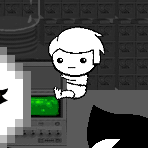

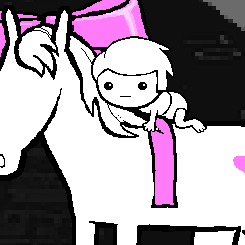
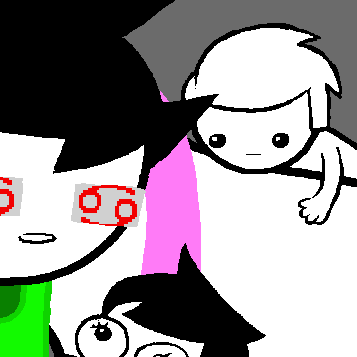

#something something naturally soft passive physically clingy temperament shoved down and inhibited due to living conditions#he gives me the same feelings as tbh autism creature but baby dave is cuter because of the wide set eyes in the style#hs#and then dave is out here near the end the comic snuggling other people over multiple pages#he is innately physically affectionate :] thats his temperament even as a baby#hes first clinging to the paradox slime machine he was made from like its his mother and Then to john who is babysitting it up
6K notes
·
View notes
Text
this the man who started the redbull 2nd driver curse btw

#ill pay for y'all's therapists#just finished a physics test it went so bad i found myself appreciating god's green earth#how paradoxical i don't believe in god#mark webber#f1#f1 memes#red bull racing
92 notes
·
View notes
Text



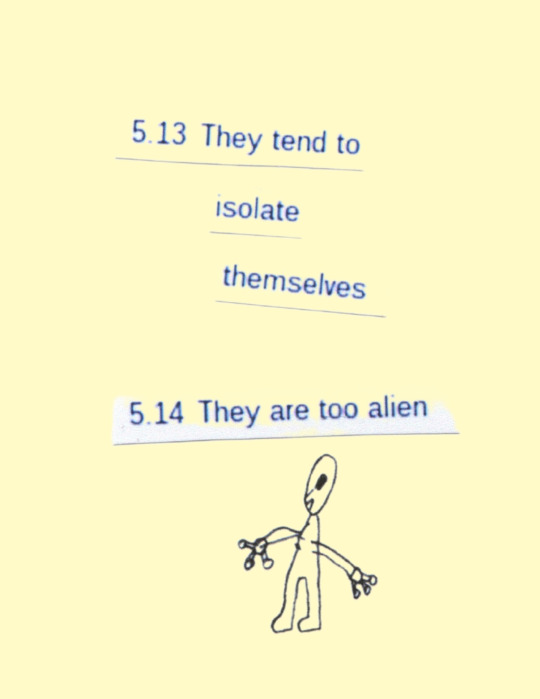
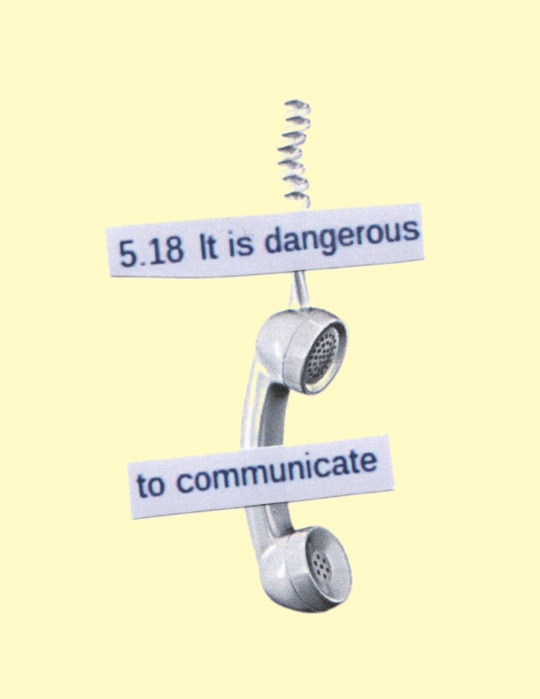

some possible explanations for the fermi paradox, according to wikipedia (inspired by this vid)
downloadable as a zine on my etsy!
#zine#wikipedia#etsy#art#poem#poetry#fermi#fermi paradox#physics#aliens#alien#collage#mixed media#mixed media art#collage art#mine
722 notes
·
View notes
Text
HUP, EPR, and Bell’s Theorem
Abstract
An educational document discussing the Heisenberg Uncertainty Principle, the EPR (Einstein- Podolsky-Rosen) Paradox, and Bell’s Theorem, written for an audience without a background in physics, but with their head still screwed on right.
1 Introduction
Ah, quantum mechanics. A bizarre theory which unfortunately describes our physical world exceed- ingly well. Einstein didn’t get it. Bohr didn’t get it. I don’t get it. And soon, you won’t get it either. As the saying goes, the more you know about quantum mechanics, the less you understand it.
I will be skipping around in terms of topics covered in undergraduate quantum mechanics courses to prepare you for the actual beast, Entanglement.
Entanglement, the property of quantum systems to remain correlated even when separated, is a concept which has transformed from a worrisome byproduct of a thought experiment [1] into a cornerstone of quantum mechanics itself. What is a quantum mechanics? Google is your friend, my dear reader. My time with you is limited„ and I cannot teach you the alphabet to make you read Shakespeare. I can only explain what you directly need to understand this article. Anything else shall be your homework, and if I am feeling kind at the end, I will provide a list of accessible resources on learning quantum mechanics the RIGHT way.
As we dive into the frankly confusing world of entanglement, it is vital that you remember one thing– A quantum particle is described by a wave function, Ψ. This wave function is a solution to the Schrodinger equation.
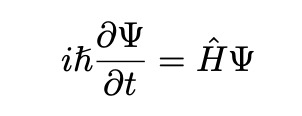
This is what they mean when they say something is both a particle and a wave; It’s behavior can be described by a special kind of wave equation, which we all know and love as the Schrodinger Wave Equation. But that’s not important right now. I’ll explain more if I need to. We need to get to HUP.
2 Heisenberg’s Uncertainty Principle
Formulated by Werner Heisenberg in 1927, the Uncertainty Principle is an indomitable tenet in the field of quantum mechanics. Its premise is simple. The more precisely a particle’s momentum is determined, the less precisely is its position. In one dimension, this can be summarized with the following mathematical statement: ∆x∆p ≤ 2
Here, ∆x is the standard deviation or “spread” of the position x, while ∆p is the standard deviation of the momentum p. As the spread of one quantity decreases, the other must increase in order to maintain the inequality. I will not bother proving the Principle in full, but I have Heisenberg’s original proof in the references.
Is that it?
Ummmmm, no. An important thing to remember about HUP is that it is not exclusive to x and p. HUP applies to any two quantum mechanical operators, A, B, which do not commute with each other i.e. [A, B] = AB − BA = 0. But that’s all mathematical nonsense, Min! What does it really mean?
Fine! I’m only doing this because it will be useful when we get to measurements in the EPR paradox and Bell theorems. In order to understand what “not commuting” means in the physical sense, let’s use our favorites, position and momentum, as an example. In quantum mechanics, xˆ andpˆ are referred to as the position and momentum operators respectively. (Why the little hats? Firstly, they’re cute, and secondly, well, you’ll see.) The whole point of calling them operators is that they act on wave functions. And in the crudest sense possible (please don’t try this at home, folks), hitting an operator on a wave function and taking the expectation value, gives a measurement of the quantum mechanical system.
There is about three semesters of quantum mechanical education I’m waving off right now, but bear with me. When we act the momentum operator on the system, in some sense we extract the momentum. Same thing for position. However, the whole deal about x and p is that they do not commute. So, the order in which you conduct the measurements absolutely does matter. First measuring x and then p would give you a different answer than first measuring p and then x. This is because the very act of measuring a quantum state changes it. That’s right! It changes. This makes all the difference when you consider the standard deviation of a bunch of measurements. If my memory of introductory quantum mechanics serves me right, after about three pages of algebra you arrive at the familiar position-momentum uncertainty principle.
The moral of the story is that the non-commutativity of these operators manifests as a sort of granularity in the accuracy of measurements you can make on a physical system. This granularity is retained between any other kinds of non-commuting measurements you can make!
On second thought, do you really need this? Probably not. But, the algebra of uncertainty principles is a pet project to me. Especially the strangest of them all, the energy-time uncertainty principle. Enough on that! Here’s the main takeaway (other than the actual HUP statement) that you need from this section:
Making a measurement on a state changes its wave function. No exceptions. None. The detached observer is not a reality in the quantum mechanical world.
3 Spin
I realized that the following sections will not make any sense if you don’t at least know what spin is. So, let’s make a short pit-stop at Spin City to learn about this nonsensical physical quantity.
We’re all aware of angular momentum– its the rotational analog of linear momentum (which we talked about the previous section). We all agree that it is a property related to the motion of an object, right? WRONG! Sometime in the 1900s (Seriously, 20th Century Physicists should chill out), it was discovered this angular momentum from motion i.e. “orbital” angular momentum, as it was called in the atomic physics context it was first described, does not account for all the angular momentum of a particle. Long story short, the remaining angular momentum, which is intrinsic to a particle, is now called Spin. Every fundamental particle has a particular value of spin, which, in quantum mechanical jargon, is the eigenvalue of the spin operator.
For understanding the following sections, we really only need to care about spin-1/2 particles, which are lovingly called fermions, and are the building blocks of all ordinary matter. The shining feature of spin-1/2 particles is that their spin can either be +1 or −1 , which is often referred to as spin-up (↑) and spin-down (↓) respectively.
Physically, the up or down comes from whether the measured spin is along the axis it is measured, or opposite to it. Yes, spin is a vector, so it does have three independent components in the three spatial directions, but it is convention to consider the z-component of the spin for calculations and experiments. Any references to up and down in the next sections are along the z-direction.
Oh, and one more thing, spin-0 particles have no intrinsic spin. This will be important when we encounter the EPR Paradox.
4 EPR Paradox
After skipping a whole bunch of most-likely important concepts in the study of quantum mechanics we arrive at the EPR paradox.
The EPR paradox is a thought experiment first described in the groundbreaking paper [1] by Einstein, Podolsky, and Rosen in 1935. Einstein was quite vocally a hater, and the EPR paradox was proposed as evidence that the description of reality provided by quantum mechanics is incomplete. Reality doesn’t care, of course, and the EPR Paradox isn’t really a paradox. In fact, it is the foundation of entanglement– a magnificent, very real feature of reality which spans black holes, quantum computers and even my field of research: Entanglement in elementary particle physics.
In fact, I’m so self-centered that the example we will use to illustrate the EPR paradox is from particle physics. Just kidding, my explanation follows Chapter 12 in Griffiths’ Introduction to Quantum Mechanics, and is a simplified version credited to David Bohm
EPRB Paradox
Suppose a pion (funky particle with spin-0) at rest, decays to an electron and positron which fly off into opposite directions. Since the pion has spin-0, conservation of angular momentum dictates that the electron and positron occupy the following spin configuration.
√(1/2) (|↑↓⟩−|↓↑⟩)
BE NOT AFRAID of the mathematical jumpscare. The fancy bracket |·⟩ is what’s called a “ket”, and is used to denote the state of a quantum system. All the expression says is that either the electron is
spin-up (+1) and the positron is spin-down (−1) or vice-versa, because the total spin of the system 22
must add up to 0. (Since the initial state is spin zero, the system must stay spin-zero even after the decay occurs. That’s what angular momentum conservation is all about.) We don’t know which combination we will get, but it must be one of the above. Measuring the spin of one of the particles will automatically tell us what the spin of the other particle is. This means that the spins of the electron and positron are correlated. In modern terms, such a state is called entangled.
Now, let’s pretend that these particles fly off in opposite directions, until say, they are several light years apart. What would happen if we found the electron and measured its spin to be +1 ? We instantly know that the positron’s spin is −1 . This is obvious. Why are we mad about this?
Naturally, we may think that the electron really was spin-up from the moment it was created and it was only that quantum mechanics did not know until we made a measurement. But by the principles of quantum mechanics, neither particle had a definite spin, until we made a measurement, causing the wave function to “collapse” and instanteously produce the spin of the positron which is lights years away!
The EPR bros were NOT having it. Einstein famously called this phenomenon “spooky action at a distance”. They stated that the quantum mechanical standpoint must be wrong! The electron and positron must have had well-defined spins from their creation, even if quantum mechanics does not know it. Quantum mechanics is not a complete description of reality and there must be some hidden variables which describe a physical system that we do not yet know.
The fundamental assumption guiding the EPR argument is that no information can propagate faster than light. This the principle of locality. In order to appease this, we can say that the wave function collapsed at some finite velocity and is not instantaneous. However, this violates conservation– If we measured the positron spin as well before the information of collapse reached it, there is a 50–50 chance that both particles are spin-up, which means the system has total spin-1. Preposterous! You can mess with anything you want in this universe, but you don’t mess with conservation laws. What do we do now?
Okay, let’s calm down. The theorists may say whatever they want, but experiment doesn’t lie. Experiment tells us that in these cases, spin is perfectly correlated. The wave function collapse is instantaneous. That’s crazy. Call your mom and tell her you want to go home. The EPR Bros are frightening you— Quantum Mechanics is NOT local so it is NOT complete.
...Except. It is. Enter, Bell’s Theorem.
5 Bell’s Theorem
Now, what’s the situation? The EPR gang is not happy. I’m not happy. You’re not happy. Is quantum mechanics wrong? No, silly! EPR said it themselves: they think it’s merely incomplete. So, in order to completely describe a quantum mechanical state, you not only need the wave function Ψ, you also need some unknown, hidden variable λ. Lots of hidden variable theories were proposed after the Einstein-Podolsky-Rosen paper, but none of them ever gained traction. It was still a respectable area of study until 1964, when J.S. Bell proved that any local (Remember locality from the last section?) hidden variable theory is incompatible with quantum mechanics.
I’ll spare you the details of Bell’s work, dear reader. One thought experiment in an essay is gruesome enough. (It is also getting quite late and I still didn’t code my calculations. I have spent far too much time on this already.)
Bell’s proof involves the wonderful use of probability, and the barest assumptions that can be made about local hidden variable theories. Basically, in any local hidden variable theory, the probabilities of various outcomes are related by what’s known as a Bell inequality. If EPR’s conjecture is right, and there really are hidden variables we don’t know about, then any physical system must obey its Bell inequality.
Except, there have been various experiments since the 1960s confirming that Bell’s inequality is indeed violated. This came as a rude shock to scientists as it is not fun to learn that reality is very much nonlocal. It was all fun and games when this was all merely a mathematical artifact, but nonlocality felt like a gateway drug to a much grimmer violation.
Causality
Bell inequality violations, no matter how surprising, are merely wonderful correlations between two sets of otherwise random data. Sure, the measurement of the spin of the electron affects the positron, but it does not cause it in any meaningful way. The person measuring the electron spin cannot use this collapse of the wave function to send a message to the person with the positron, since they don’t control the outcome of the experiment. They can decide whether to measure the electron at all, but the other person only has access to the positron’s spin and cannot tell whether the electron has been measured or not.
Phew! This sort of nonlocal influence does not transmit any energy or information, so it is exempt from the speed of light. Meanwhile, causal influences, those which do transmit information or energy, cannot travel faster than light. According to special relativity, if this was possible then, there are reference frames in which information can propagate backwards through time. And that, my dear reader, is what we call a big nono. Since the EPR paradox does not imply that causality is violated, we can lie uncomfortably on our bed of nonlocal but causal theory of quantum mechanics.
So rest easy, quantum mechanics is weird, but safe. Entanglement is not a fairytale, but also not the boogeyman. It’s probably more scared of you than you of it. Just give it some time. More answers will follow.
What Do I Do Now?
So, you want to know more? Or curl up in a ball and never think about this again? Either is fine. I won’t judge. If your answer is the former, here are some resources to guide you through the thickets of quantum mechanics.
PopSci Sources
1. IDTIMWYTIM: Heisenberg Uncertainty Principle 2. Why did Quantum Entanglement Win the Nobel Prize in Physics? 3. Bell’s Theorem: The Quantum Venn Diagram Paradox
Surely, you’ll get more out of these wonderful science Youtubers than you did from me yapping for four pages. There are a bunch more probably, but you’ll have to find them yourself.
Academic Sources
1. An Introduction to Quantum Mechanics, D.J. Griffiths.
Of course, there are other quantum mechanics textbooks that I like much more than this one. But, this is the least daunting, so I’ll leave it here.
Don’t forget to like and subscribe for more silly academic style papers.
References
[1] A. Einstein, B. Podolsky and N. Rosen, “Can quantum mechanical description of physical reality be considered complete”? Phys. Rev. 47, 777–780 (1935) doi:10.1103/PhysRev.47.777
[2] Heisenberg, W. “Über den anschaulichen Inhalt der quantentheoretischen Kinematik und Mechanik”. Z. Physik 43, 172–-198 (1927). https://doi.org/10.1007/BF01397280
[3] D.J. Griffiths, D.F. Schroeter, “Introduction to Quantum Mechanics, Third Edition” Cambridge University Press (2018) 978–1–107–18963–8,
#physics#quantum mechanics#heisenberg uncertainty principle#bell's theorem#epr paradox#quantum entanglement#min vs physics#lol i guess i am posting it
122 notes
·
View notes
Text

#schrodinger#cats#science#physics#paradox#quantum mechanics#feline#pets#wronghands#webcomic#john atkinson#humor
79 notes
·
View notes
Text
“He does not know how to tell Suguru that since he turned sixteen, the only infinity he has ever truly craved grasping was the one where their futures stretch up and out into the horizon together. All he had wanted was this sort of exponential growth, the version where they only ever got stronger, reached higher than anyone ever could and never stopped. But it’s as though Suguru has hit some sort of invisible ceiling and Satoru is left floating in the sky, alone. He doesn’t know what to do with this, doesn’t want to let it be true, and all at once has no idea what to say or how to turn it into a lie. So he clears his throat. “Have you heard of Achilles and the tortoise?””
or: a conversation, post-star plasma vessel incident.
posted it here!
#jjk#jujutsu kaisen#satosugu#stsg#gojo satoru#geto suguru#gojo x geto#satosugu as a metaphor for physics paradoxes
46 notes
·
View notes
Text
Hello! I have a physics related question, specifically about special relativity and the relativity of simultaneity. And I haven't been able to find the answer anywhere so i'm hoping the science side of tumblr will help me out here. (and forgive me if i'm using incorrect phrasing here, english is not my first language and i'm just now *actually* learning about relativity, but i hope you're able to understand my question anyways)
Yk the train-and- platform paradox?
What I don't understand is why person A (on the train) sees the lightning strikes at different times just because in person B (on the platform) predicts they will (because B is perceiving the event from their own reference frame). This whole thing seems based on the assumption that person A and person B agrees that one of them sees the lightning at the same time and the other at different times, but I don’t understand why that is a correct assumption to make. If person B sees the lightnings at the same time, then they conclude they happened at the same time. And if they did happen at the same time, person A would in their own frame of reference also see the lightnings at the same time. So why does person A see the lightnings at different times just because that’s what would have happened in person B’s reference frame?
#physics#modern physics#relativity#special relativity#science#scienceblr#science side of tumblr#relativity of simultaneity#train-and-platform paradox
23 notes
·
View notes
Text
Happy Birthday, Gojo (Kurisaki) Rinko!

[Rinko, wearing her Jujutsu Tech uniform, shrugs her shoulders.]
Rinko: Satoru and I are going to dinner. Maki and Yuuta agreed to watch the–
[Satoru’s hand covers her mouth, and he shushes her as he stares at her over his dark shades.]
Satoru: She said not to mention the kids!
[Rinko rips Satoru’s hand off and scowls.]
Rinko: She didn’t give us a good reason for why, though. I pushed them out. I should get to talk about my kids if I want to!
Satoru: She said she has bigger plans for their reveal eventually!
[Rinko rolls her eyes.]
Rinko: She’s barely written anything beyond our honeymoon yet. She’s barely written anything for us in months. At this rate, she’ll never get to her reveal.
Satoru: That’s not the point! Today is about your birthday and our plans for celebrating.
Rinko: You and I are getting dinner together. But I feel like since it’s my birthday, then I should get to–
Satoru: Yep! We’re getting dinner together. Just the two of us. But we’re also here to help promote Kiko’s new Patreon.
Read the rest for free on Patreon
Officially announcing my Patreon! Rinko's birthday post is the very first and it's public, so you don't have to be a Patron to read it!
I also tried something pretty new with how it's formatted/written, so I'd love to know what you guys think 😊
-Kiko 💕
#patreon#kiko's patreon#goinko#another level#goinko patreon#patreon exclusive#jjk x oc#gojo x original female character#gojo and rinko#rinko and gojo#gojo rinko#rinko kurisaki aka my favorite oc i've ever written#physical paradox#gokudō#gojo x oc#gojo satoru fanfic#Gojo satoru fluff#goinko fluff#kurisaki rinko#gojo x reader
17 notes
·
View notes
Text
I’ve put together a list of paradoxes I want to explore and I’m already halfway through it. Two of them have already made it to my favourites. Which is, 'The Twin Paradox' because it shows that our everyday experience of time is just one version of a deeper physical reality. And 'Cantor Infinity Paradox' because it shows that infinity isn't just one endless thing, it has different levels and complexity. Which is both mind blowing and beautiful.
If paradoxes are your thing, check out this list below -
Aristotle’s Wheel Paradox
Russell’s Paradox
Berry’s Paradox
Cantor’s Infinity Paradox
Zeno’s Paradoxes
Hilbert’s Hotel Paradox
The Raven Paradox
The Liar Paradox
The Unexpected Hanging Paradox
The Paradox of the Heap (Sorites)
Moore’s Paradox
The Dome Paradox
The Muon Paradox
Einstein’s Pole in the Barn Paradox
The Twin Paradox
The Faint Young Sun Paradox
The Dark Sky Paradox (Olbers’ Paradox)
The Time Reversibility Paradox
The Bootstrap Paradox
Braess’s Paradox
The Gambler’s Fallacy Paradox
Newcomb’s Paradox
The Monty Hall Paradox
The Ship of Theseus
The Painter’s Paradox
The Paradox of Tolerance
The Paradox of Value (Diamond-Water Paradox)
I'd love to hear about your favorites and any other suggestions you have!
7 notes
·
View notes
Text
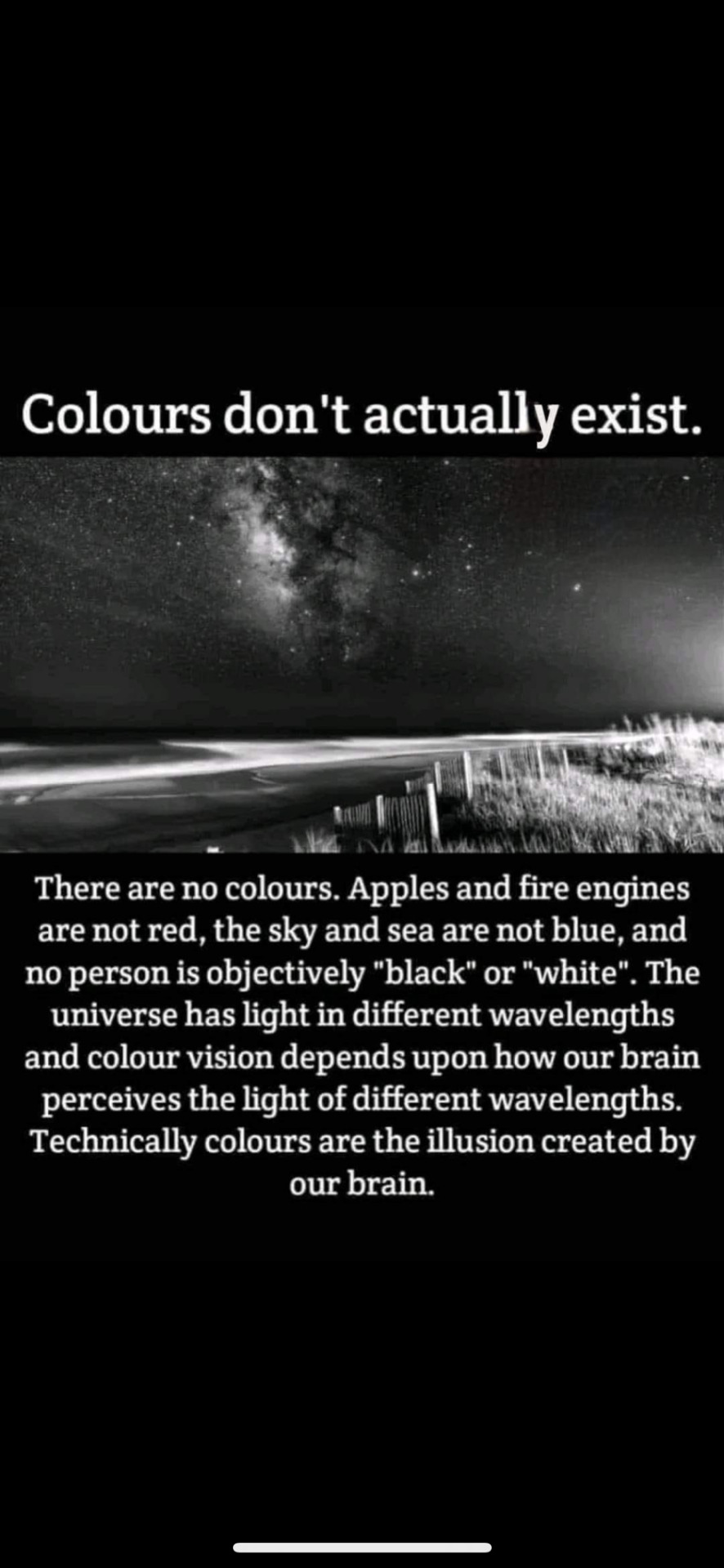
#physics#astronomy#science#quantummechanics#quantum mechanics#psychology#philosophy#quantumphysics#astronaut#paradox
86 notes
·
View notes
Text
ok one more thing. absolutely criminal that phi and akane don't interact more in ztd because to me they could be besties...... if you even care
#trevor.txt#girls who are living paradoxes <3#and also so very autistic and Love to infodump#vlr/ztd spoilers in tags ->#well. i do think any interactions between them would be sort of awkward considering phi mostly knows akane as herself in 2074 co-running#the nonary game there. like shes not zero but she def helped sigma work on it. so i do think phi would not really trust her all that much#for a while. she doesnt trust easily anyways but. yk. if they get past that though i think they could be good friends. theyre both so insan#also another thing they have in common . they both burned to death. and live at One point in timelines where they died#aka d-end 2 for phi and any 999 end where junpei doesnt save akane#but past how Insane they are as characters i think a conversation between them would be funny#infodumping for 2 hours straight. theyd be like fuck yes lets talk about multiple timelines and physics and the morphogenetic field and#psychology. itd be funny trust#zero escape#zero escape phi#phi vlr#akane kurashiki#999#9 hours 9 persons 9 doors#virtue's last reward#vlr#ztd#zero time dilemma#phiposting
38 notes
·
View notes
Text
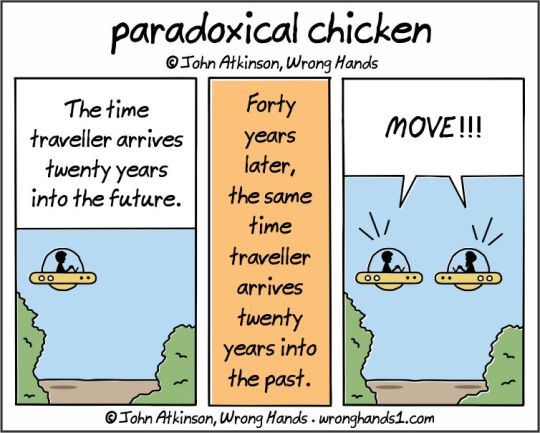
#paradox#time#time travel#science#physics#past#future#chicken#wronghands#john atkinson#webcomic#funny#humour
23 notes
·
View notes
Text
varadeva is very 'unstoppable force meets immovable object'
except the unstoppable force is what makes the object immovable.
and the force will only ever be unstoppable for the object.
#it's paradoxical#but that's them.#i don't even have to mention who is what in this analogy#not even varadha can stop deva when it comes to varadha#salaar#varadeva#physics 101#chemistry too. all the chemistry.
69 notes
·
View notes
Note
The electron

I'm not very knowledgable about quantum physics, but I know the basic jist of quantum superposition.
We're heard the Schrödinger's Cat thought experiment. If a cat is in a box with something that may eventually kill it, you do not know if it is alive or dead before you open the box. Therefore, the cat is both alive and dead, until the instance wherein you open the box.
In quantum physics, an electron can exist in two states at the same time — a particle and a wave. But, it can only be observed as one.
Gender's weird, right. Quite a few societies and cultures have adopted this binary model of things, which makes sense considering how the vast majority of the time, biological sex is binary — although not all of the time, and that's important to note.
But, the thing is, it's deeply engrained in the Western society that I live in, that people are either male or female. Views can change, but instinctual reactions are harder. When someone looks at you, they'll sort you into a binary box of male or female, no in between, no both, no other option, no write-in.
The Observer's Paradox in quantum physics is what it's like to be both and only be allowed to be one. Get you a particle that can do both. Male and female. Right here and on the other side of the universe.
Conclusion: Electrons are trans.
#electrons#quantum physics#schrödinger's cat#observer's paradox#transgender#asks#that-fellow-from-dres
29 notes
·
View notes
Text

The Battle for the Truth: Science, Rhetoric, and the Public Sphere
Reality is nothing but a collective hunch. — Lily Tomlin
The pursuit of knowledge is marked by a paradoxical dynamic where systems embodying the principles of scientific inquiry, acknowledging their own incompleteness and embracing the provisional nature of truth, are frequently attacked by counterparts that proclaim absolute certainty yet often lack a foundation in empirical evidence. This phenomenon raises a profound question about why rigorously scientific systems, aware of their limitations, incur criticism from unscientific systems that claim completeness. The underlying reasons for this critique are rooted in epistemological, psychological, and sociological factors that drive this seemingly counterintuitive conflict.
At the heart of scientific systems lies an inherent humility, an acknowledgment of the complexity of the subject matter, and a willingness to revise or even overturn existing theories based on new evidence. This openness is not a sign of weakness but a hallmark of the scientific method, which thrives on skepticism, peer review, and empirical validation. However, this selfsame openness can be misconstrued by critics from closed systems as indecisiveness or uncertainty, providing a perceived foothold for attack. In contrast, closed systems often present themselves as comprehensive and definitive, eschewing the nuanced uncertainties of scientific inquiry for the comforting simplicity of absolute truths. This appeal to certainty resonates deeply with a public frequently overwhelmed by the intricacies of modern life, seeking clear, uncomplicated answers to complex questions.
A significant portion of the critique stems from a fundamental misunderstanding or deliberate misrepresentation of the scientific process. The iterative nature of scientific inquiry, where theories are refined or revised based on new evidence, is often portrayed as flip-flopping or lack of conviction. Critics from closed systems may fail to grasp or choose to obscure the distinction between the provisional nature of scientific knowledge and the method's robustness in approaching truth. Beneath the surface of these critiques often lie power dynamics and ideological differences. Closed systems may perceive scientific findings as a threat to their influence, audience, or worldview, prompting a defensive stance that manifests as attacks on the scientific system's legitimacy. Philosophical disagreements over the nature of truth, the role of empiricism, or the balance between consensus and dissent also fuel these conflicts, highlighting the deeply entrenched nature of these disputes.
To address this paradox, education and awareness are crucial. Enhancing public understanding of the scientific method can foster a broader appreciation for its strengths and the inherent value of acknowledging complexity. Scientists and science communicators must effectively convey the provisional nature of scientific knowledge, highlighting its adaptive and refining aspects as strengths rather than weaknesses. Encouraging respectful, open dialogue between proponents of different systems, while challenging, can facilitate mutual understanding and, in some instances, reconciliation of viewpoints. Strengthening science education and promoting clear communication are key strategies to navigate this paradox, ultimately fostering a more informed, critically thinking society.
The critique of scientific systems by unscientific counterparts underscores a profound misunderstanding of the scientific endeavor. Rather than a vulnerability, the acknowledgment of incompleteness is a badge of honor, reflecting the scientific community's unwavering commitment to the pursuit of truth, no matter how complex or provisional. Embracing education, clear communication, and engaged dialogue becomes paramount, not only for the integrity of scientific knowledge but for the fostering of a society that values critical thinking and the pursuit of knowledge. By navigating this paradox with awareness and strategies aimed at enhancing public understanding and dialogue, we can work towards a future where the scientific method is valued for its strengths, and the provisional nature of truth is seen as a catalyst for continuous learning and improvement.
Marjorie Shapiro: Supersymmetry, Extra Dimensions and the Origin of Mass - Exploring the Nature of the Universe Using PetaScale Data Analysis (Google Tech Talks, June 2007)
youtube
String Theory isn‘t Dead (Sabine Hossenfelder, December 2024)
youtube
The Problem With Sabine Hossenfelder (Professor Dave Explains, October 2024)
youtube
No, Sabine, Science is Not Failing (Professor Dave Explains, November 2024)
youtube
Lawrence Krauss: God, String Theory, and the State of Physics (Robinson Erhardt, March 2024)
youtube
Sabine Hossenfelder Can’t Stop Acting Like a Complete Fraud (Professor Dave Explains, February 2025)
youtube
Wednesday, February 26, 2025
#science#philosophy#epistemology#critique#knowledge#truth#uncertainty#provisionality#scientific method#skepticism#critical thinking#philosophy of science#science communication#public perception#rhetoric#complexity#ambiguity#paradox#intellectual humility#presentations#ai assisted writing#machine art#Youtube#theoretical physics#interview#commentary
7 notes
·
View notes